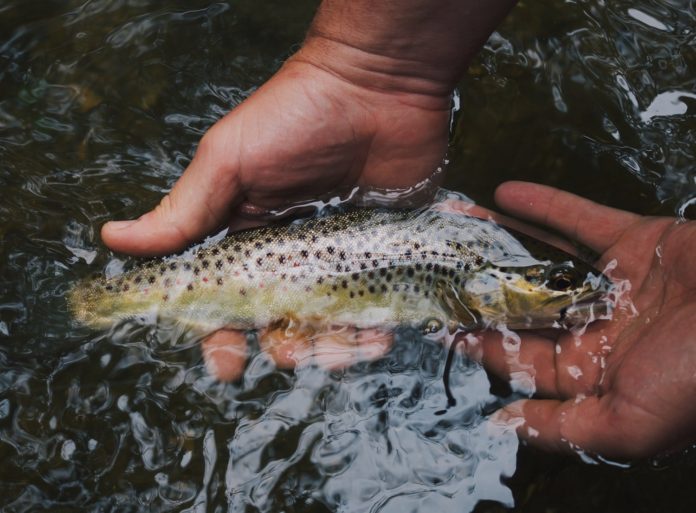By TONY BONAVIST
In early November of 2019, I wrote about the New York Department of Environmental Conservation’s (DEC) proposed plan to make significant changes in how it managed New York’s trout rivers. That piece was titled “DEC proposes controversial fishing regulations.” The article was based on the state’s draft Trout Stream Management Plan, which had been subject to a number of public hearings around the state. Several of my fly-fishing friends and I commented on various aspects of the draft document. Subsequent to that time, DEC staff reviewed and responded to the comments it received, many of which questioned several of the proposed changes in the new regulations. According to the final plan, the DEC received almost 500 comments, “most of which were favorable,” to quote the document.
Looking back and reviewing what I wrote over a year ago, my comments were not “mostly favorable,” although some were. As a fisheries professional, I advocated for an extended trout season on the main rivers that feed the large New York City DEP Catskill reservoirs that are lightly fished during the regular angling season, which ends September 30. It was my recommendation to extend the season until October 15 for those rivers. In my view, those two additional weeks would allow anglers the opportunity to fish for large, lake-run brown trout, some of which exceed 10 pounds. Those reservoirs are Roundout, Neversink, Pepacton and Cannonsville. The Ashokan/ Esopus system is already open until the end of November. What I did not approve of, along with several colleagues, is to allow no-kill fishing on all trout rivers from October 1 until March 31. Adoption of that regulation would include not only major major rivers systems but also the rather small tributaries of those rivers where trout actually spawn. Having anglers fishing for and harassing large trout during the stressful processes associated with spawning is not a regulation that most of us can support. It is certainly not ethical. Although we made the DEC aware of our sentiments, trout rivers, including their small tributaries, will remain open from October 16 until March 31 once the plan is implemented on Thursday, April 1. On that date, all rivers, with the exception of tributaries to the great lakes and finger lakes, will be managed as no-kill during the extended season. Anglers will be required to use artificial lures and flies with a single hook point to minimize hooking mortality. So, in a matter of speaking, the recommendations I made in years past to extend the season on the rivers feeding DEP reservoirs will now go into effect. Rivers like Beaver Kill, currently managed through “special regulations,” will be grandfathered in and remain under those regulations.
When implemented, the plan will provide five categories of management for New York’s trout rivers; three for wild and two for hatchery-reared trout: wild, wild premium, wild quality, stocked and stocked enhanced.
In theory, each category was established based on specific criteria and will have specific size and bag limits.
In addition to the issues associated with the state allowing fishing during the trout spawning season, there are other regulation changes that some of us believe are ill-advised. For wild premium rivers, the bag limit will be one trout, any size per day. Based on information provided in the plan, the new size and bag limits are based on the “ecology” of the resource. On one wild premium river that I am familiar with, the current size and bag limits are based on biological survey; the regulations were designed to protect 2- and 3-year-old brown trout. The existing regulations on that river are three trout, 12 inches or larger per day. On April 1, the new regulations for wild premium rivers go into effect. Will they protect 2- and 3-year-old brown trout? The answer to that is no. Those vulnerable year classes, once protected, will now become part of the “catch.” While most fly fishers don’t keep fish, other anglers do. For example, say four people go fishing on that river, and since there is no size limit, each person keeps one 10- or 11-inch trout. As a result, those four fish will never reach the 12-inch size limit designed to protect that age group and attain a larger size. One fisheries professional believes the “one fish any size” regulation provides a goal for anglers and actually promotes harvest.
Readers should also keep in mind that the term “wild premium” river, by definition, promotes wild, trophy trout fishing. That means more anglers will be drawn to an already crowded resource with an expectation of hooking very large trout.
The plan, as part of its many recommendations, promotes public access via the states Public Fishing Rights (PFR) acquisition program, the concept being that without access there is no fishing. I find it ironic, in that, while the plan promotes access, the DEC has rejected our requests to look into the posting along that reach of the East Branch of the Delaware River, between East Branch and Fish’s Eddy. There is over a mile of PFR in that section that is no longer accessible to anglers because the state will not confront the landowners responsible for the posting.
There is a lot more in the plan that anglers may wish to familiarize themselves with. Those interested may simply search for “New York State Trout Stream Management Plan.”
Read more Ramblings of a Catskill Fly Fisher.
Credit: Source link






























